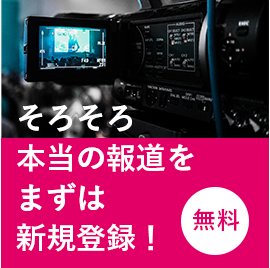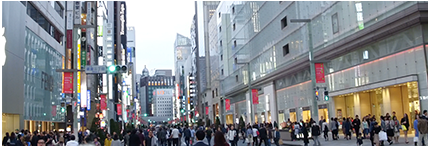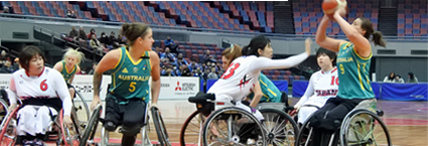The “Anshin Shinwa”* Spoils the Ministry of the Environment’s Thyroid Survey By RYUICHI KINO
March 11, 2013
Ryuichi Kino was born in 1966. He became a freelance writer in 1995 after a carrier in production editing. He wrote the book “Kensho, Fukushima Genpatsu Jiko Kaiken, Toden/Seifu wa Nani wo Kakushita no ka (Iwanami Shoten)” (What Did TEPCO and the Government Conceal about the Fukushima Nuclear Accident?) Official Blog: “Kino Ryu ga Kaku”: http://kinoryu.cocolog-nifty.com/
On March 8, 2013 the Ministry of the Environment (MOE) released preliminary results for the thyroid survey under the title “Study of the presence of thyroid findings in three prefectures outside Fukushima Prefecture (Press Conference)”. About the background and the purpose of the survey, MOE indicated that “about 40% of thyroid cases, as diagnosed by the Fukushima Prefecture Health Management Survey, developed cysts 20.0 mm or smaller”, and that “such small cysts do not require detailed examinations”, but “since it’s considered to be a matter of concern for residents”, “we carried out tests similar to those conducted by the Fukushima Prefecture Health Management Survey targeting children of three prefectures outside Fukushima Prefecture, we evaluated the relevance of the results and released that information in the hope that it is going to be of help for the promotion of residents’ understanding”.
(http://www.env.go.jp/press/press.php?serial=16419)
The survey was certainly intended to curb anxiety since many people expressed concerns over the results of the survey conducted in Fukushima Prefecture. Ultrasound tests conducted on 4,365 children in Aomori, Yamanashi, and Nagasaki revealed that an overall 42.4% did not have nodules or cysts (A1 Assessment of the Fukushima Prefecture Health Management Survey), 56.6% had nodules 5 mm or smaller or cysts 20 mm or smaller (A2 Assessment), and 1% of the children had nodules 5 mm or larger or cysts 20.1 mm or larger (B assessment). No child has been reported to fall under the C assessment which requires immediate secondary examination due to a critical thyroid condition (Cf. the Table above).
Relying on the MOE survey, the Asahi Shimbun and NHK respectively reported that “Similar Rates of Infant Thyroid in Other Prefectures as in Fukushima” and “Infant Thyroid, Same Results as in Prefectures outside Fukushima”. Both media sided with the Ministry of the Environment which indicated that the surveys conducted in Fukushima and other prefectures almost lead to the same results. The Asahi Shimbun echoed the Chairman of the Radiation Effects Research Foundation, Shigenobu Nagataki, reporting that “it’s clear now that the situation in Fukushima is not peculiar”. NHK even went too far by saying that “this announcement shows that thyroid tumor cases in Fukushima can hardly be linked to the influence of radiation exposure”.
“Infant Thyroid, Same as in Prefectures outside Fukushima” (NHK News, March 8, 2013)
http://www3.nhk.or.jp/news/html/20130308/k10013054841000.html
“Ministry of the Environment Survey Reveals Similar Figures of Infant Thyroid in Other Prefectures as in Fukushima”
(Asahi Shimbun, March 8, 2013)
http://www.asahi.com/special/news/articles/TKY201303080179.html
The trouble is that, as its purpose indicated, the MOE Thyroid Survey does not solve the issue since it has just determined the “size” of cysts or nodules without saying if they are malignant or benign. It does not say how to appreciate the already confirmed 3 and suspected 7 infant thyroid cancer cases found in Fukushima Prefecture. It is hard to find any particular meaning in the MOE announcement since the data it provides are extremely vague. The detailed survey results are scheduled to be released next month, but nothing precise is likely to be expected. Actually, the MOE Thyroid Survey did not include cytology tests as conducted by the Fukushima Survey. The MOE Thyroid Survey cannot simply be compared with the Fukushima Survey with respect to the following points.
First of all, it lacks the repartition of children’s age. If thyroid abnormalities are present, they are supposed to develop with age growth. Thus, a surgical comparison is impossible unless the repartition into different ages as in the Fukushima Survey is put into play. Also, in the Fukushima Survey 26% of children were 0 to 5 years old, whereas the MOE Thyroid Survey did not include children less than 3 years of age.
Besides, while cysts and nodules were separately counted in the Fukushima Survey, they were lumped together in the MOE report. Again, without a separate counting, it is hard to draw a comparison between the two surveys, because the presence or the absence of nodules is of great significance in the diagnosis of thyroid cancer.
Consequently, at the press conference given on March 8th the relevance of the MOE Thyroid Survey was massively called into question. Voices pointed to the fact that “cases of thyroid cancer have already been confirmed in Fukushima Prefecture and that if a comparison with other prefectures was to be drawn, it was necessary to conduct secondary examinations in order to assess the previous tests as has been done in Fukushima”. The Ministry of the Environment responded that when the survey framework was conceived in the summer of 2012, there were no confirmed cases of thyroid cancer. As a matter of fact, secondary examinations were not included. If detailed examinations are to be conducted, it is necessary to have the consent of people who took the previous tests. It’s, thus, difficult to continue testing with the same participants, which means that it would be required to redo the examinations from the very start.
When the situation is seriously considered, it’s difficult to understand that a simple population screening is put forward as the norm for comparison with other prefectures. The Ministry of the Environment declared that it has taken advice from experts in order to conduct the survey, but nothing has been revealed about consulted persons and discussions held.
The Japan Association of Breast and Thyroid Sonology was entrusted with the task of conducting the survey. The Association established a board of 9 members who actually gathered twice in order to evaluate on the results of the survey. The third and final meeting is scheduled for March 27th.
Board Members of the MOE Thyroid Survey
Shinichi Suzuki, Professor at Department of Surgery II, School of Medicine, Fukushima Medical University.
Noboru Takamura, Professor at the Atomic Bomb Disease Institute, Nagasaki University, Department of Global Heath, Medicine, and Welfare.
Hiroki Shimura, Associate Professor at the Department of Environmental Medicine, Interdisciplinary Graduate School of Medicine and Engineering, University of Yamanashi.
Masafumi Kitaoka, Chief Division of Endocrinology and Metabolism, Showa General Hospital.
Takashi Akamizu, Professor at the 1st Department of Medicine, Wakayama Medical University.
Akira Otsuru, Professor at the Department of Radiation Health Management of the School of Medicine of the Fukushima Medical University.
Shunichi Yamashita, Vice-President of the Fukushima Medical University, Director of Radiation Medical Science Center for the Fukushima Health Management Survey.
Misa Imaizumi, Researcher at the Department of Clinical Studies, the Radiation Effects Research Foundation.
Nobuyuki Taniguchi, Professor at the Department of Clinical Laboratory Medicine, Jichi Medical University (Chairman of the Survey Board).
No matter the evaluation the board is going to come up with, it’s vain to expect a reliable outcome from a comparison with the results of the Fukushima Survey.
Conversely, views support that scientifically it’s an “epidemic” since 3 cases of infant thyroid cancer have been confirmed by the Fukushima Prefectural Health Management Survey.
Effects of Radiation on Thyroid Cancer Cases Undeniable: An Interview with an Epidemiologist
http://www.ourplanet-tv.org/?q=node/1549
According to this article, Toshihide Tsuda, epidemiologist and Professor at the Graduate School of Environmental Science of Okayama University indicated that if at a certain period in a certain area a relatively rare disease strikes 3 individuals, epidemiologically speaking, it’s to be declared as an epidemic and appropriate measures are to be taken.
Since it happens that thyroid shows no symptoms, which means that thyroid incidence is not necessarily pathological, Professor Tsuda takes into account the period before morbidity. The figure of 1 to 2 children in a million is very high, and there is no doubt that the rate will turn out to be 7.8 to 11 children.
Professor Tsuda criticized Professors Yamashita and Suzuki of the Fukushima Medical University who denied the influence of radioactive exposure on already confirmed and suspected cases of infant thyroid cancer. About the absence of countermeasures, he declared that “to begin with, there is no single piece of evidence to deny the influence of radiation exposure”, and that “if there is no radiation exposure influence, than ‘it’s an outbreak with unknown causes’. That’s why it’s imminent to carry out an across-the-board survey”.
Was it in order to hoodwink the public that the Ministry of the Environment released a report pretending to provide scientific data and figures? A host of experts questioned the relevance of the MOE report. Shunning scientific analysis in order to put forth figures released by the administration for the sake of security will hardly relieve residents’ concerns. Above all, such tactics are going to jeopardize the execution of appropriate measures.
The most important thing to do is not to indiscriminately deny the influence of radiation, but to properly explain the risks and provide the right information and assist residents in their decision. Residents might decide to evacuate or choose to stay. Not discrimination, but supportive measures which respect each of the choices are needed. A mandatory policy which just stresses security and imposes home return will only contribute to untie community bonds between residents.
(Excerpt from “Kinoryuichi no Blog”)
*The “Anshin Shinwa” (Security Myth) here is intended to echo the “Anzen Shinwa” (Safety Myth) which had it that Japanese Nuclear Power Stations were safe. “Anzen” (Safety) was the leitmotiv in Japan before the nuclear crisis. The Security Myth, on the other hand, particularly refers to the way public authorities are downplaying the dangers and risks of radiation in Fukushima (A note by the translator).
(Translated from Japanese by Willy Lukebana Toko)








